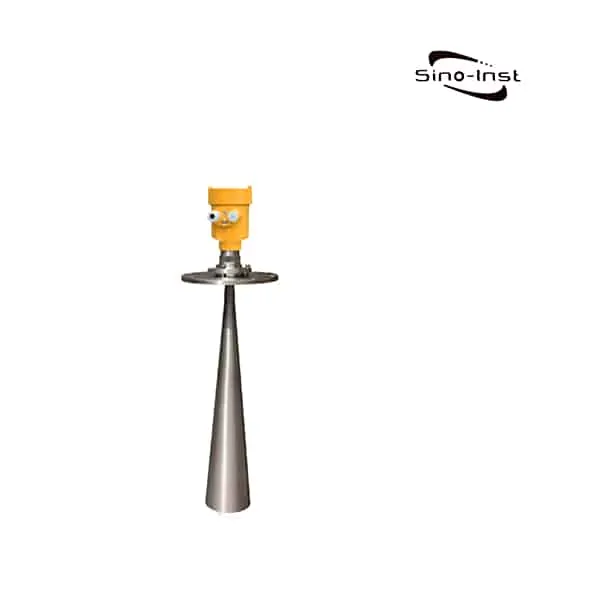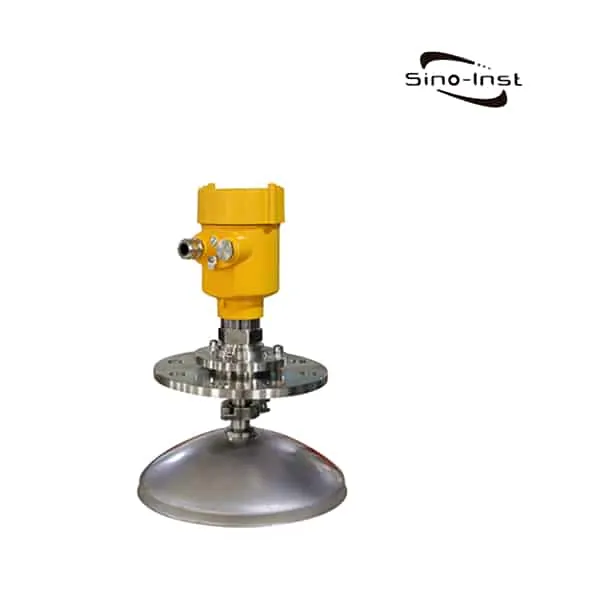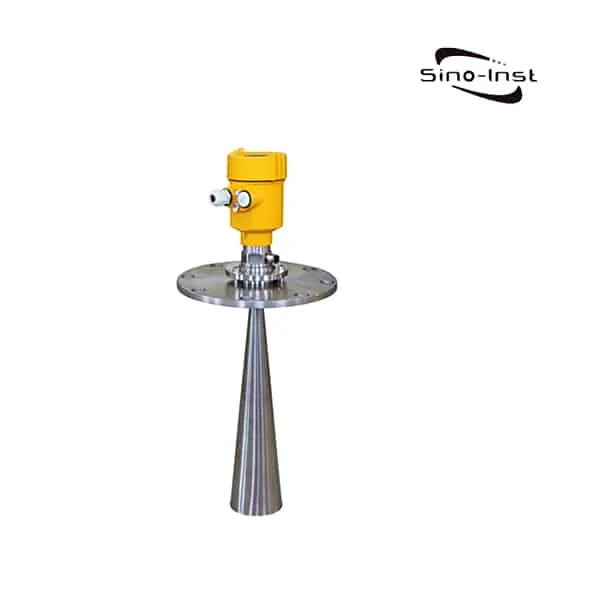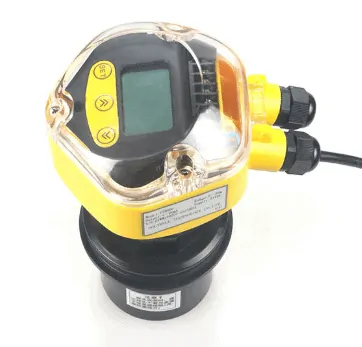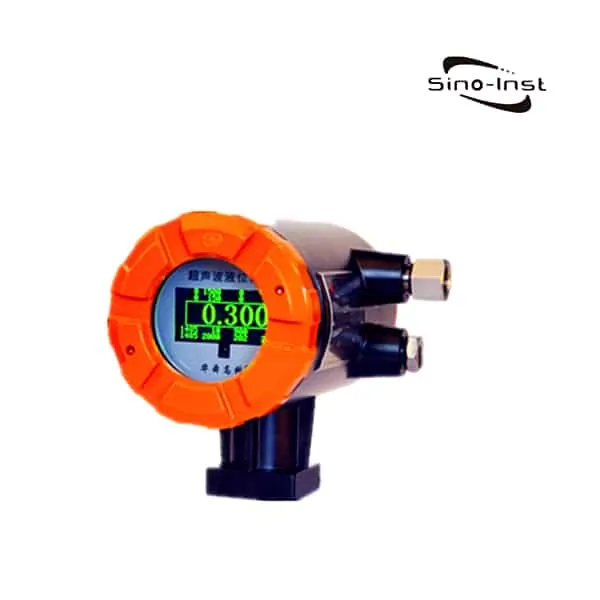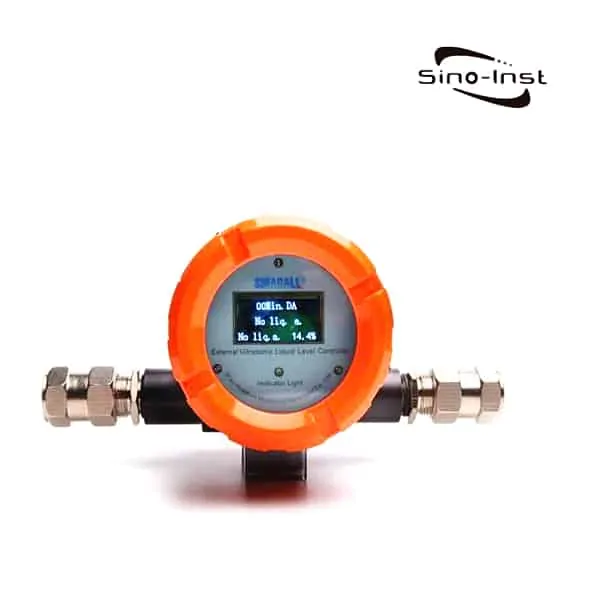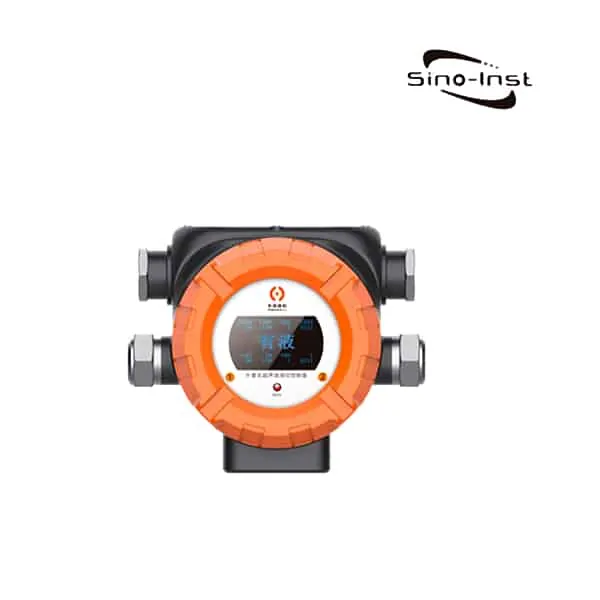Solid level sensor is also called the solid state level sensor. Specially used to measure solid material level. Non-contact Continuous level measurement in solid particles or bulk solids.
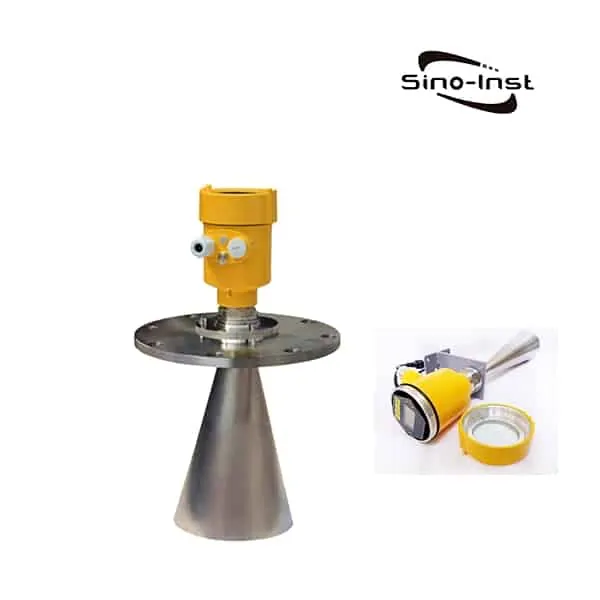
Solid level sensor measures the solid level. Solids have many different properties from liquids. SIRD-804 Radar Solid Level Sensor uses 6GHz pulsed radar signals. The maximum range is 35m. Designed specifically for solid measurement, not affected by temperature, pressure changes or steam level changes. It can be used for continuous measurement of solids (including but not limited to lime block measurement; raw coal measurement, etc.). Dot matrix LCD liquid crystal screen Display. Sight and purge connection is optional. Support HART® protocol and 4-20mA output. Applicable medium: solid particles or blocks, not suitable for solid powders.
Features of SIRD-804 Radar Solid Level Sensor
- Non-contact measurement. No wear and no pollution
- Short wavelength, especially suitable for medium measurement in solid dust environment
- The blind area is small, and the small silo can also obtain good measurement results
- The beam angle is small and the energy is concentrated. The echo ability is enhanced, which is beneficial to avoid interference
- High signal-to-noise ratio, better performance can be obtained even in fluctuating conditions
- Small size speaker, easy to install on site
- Explosion-proof type is optional. Suitable for applications in hazardous locations
- LCD dot matrix liquid crystal display. What you see is what you get
Specifications of SIRD-804 Radar Solid Level Sensor
| Applicable medium: | Solid particles or blocks, not suitable for solid powder |
| Application: | Lime block measurement; raw coal measurement |
| Explosion-proof certification: | Exia IIC T6 Ga/ Exd IIC T6 Gb |
| Measuring range: | 35m |
| Antenna: | Horn antenna |
| Frequency: | 6 GHz |
| Process temperature: | -40~130℃(standard type)/-40~250℃(high-temperature type) |
| Measurement accuracy: | ±20mm |
| Process pressure: | (-0.1~0.3)MPa |
| Signal output: | (4~20)mA/HART |
| On-site display: | Four LCD programmable |
| Power supply: | Two-wire system (DC24V) four-wire system (DC24V/AC220V) |
| Repeatability: | ± 1mm |
| Housing: | Single cavity/aluminum double cavity/plastic/stainless steel single cavity |
| Process connection: | Universal joint flange (optional) |
Featured Radar Solid Level Sensors
Solid level measurement
A solid Level Sensor refers to an instrument that detects changes in the height of solid materials in containers in real-time. Level gauges are also called level transmitters, level controllers, level gauges, and level gauges.
Solid level measurement is widely used in modern industrial production, mainly to detect the height of materials in closed or open containers during industrial production.
Generally speaking, the continuous detection method of material height is called the continuous measurement method. The detection of material height reaching a certain position is called limit measurement method, or switch measurement method.
The instrument that is often used to measure and control the level of solids or liquids in storage tanks, tanks, etc. is called Solid Level Sensor.
Among them, the instrument specifically used to measure solids is also called Solid Level Sensor. The instrument specially used to measure liquid is called a liquid level sensor. Extended reading: Radar Level Meter for Corrosive Liquids

There are many types of Solid Level Sensors. This article will list the most common and commonly used types of level meters on the market today, and briefly introduce them to users.
Static pressure type level meter: used for level measurement in tanks or containers, can be installed directly or through remote sealing components.
Ultrasonic level meter: used for level monitoring of liquids and granular solids.
Radar level meter: small beam angle (minimum 5 degrees), energy concentration. Stronger anti-interference ability. Greatly improved measurement accuracy and reliability. Both solid dust and liquid can be monitored.
Capacitive level meter: level measurement under high temperature and high pressure conditions. Dustproof, anti-hanging material, anti-steam, anti-condensation. A new type of capacitive continuous level meter. Due to the use of radio frequency technology and microcomputer technology, it solves the problems of large temperature drift, difficult calibration and fear of adhesion of traditional capacitive level meters.
It can be widely used in continuous measurement of liquid and solid silo levels in various industries. Especially for measurement under high temperature, strong corrosion, strong adhesion, and dusty environment, the capacitive level meter is the most suitable.
Level switch: It is used to detect the predetermined liquid level of granular solids, slurries and interfaces. Ultrasonic method or high-sensitivity capacitive measurement.
Extended reading: Radar level sensor for solids – Dust solid level measurement
Ultrasonic Level Sensor for Solids
The ultrasonic pulse emitted by the ultrasonic transducer is transmitted to the surface of the object to be measured through the propagation of coal qualification. After reflection, it returns to the receiving transducer through the sound transmission medium.
Measure the time that the ultrasonic pulse propagates in the sound transmission medium from the transmission to the reception. Then according to the speed of sound in the sound transmission medium, the distance from the transducer to the object surface can be calculated. To determine the level.
FAQ
What are the different types of level sensors?
Types of Level Transmitters:
Level measurement transmitters are of seven types. Each type of transmitter works in a different way, and makes it useful for different types of processes.
Capacitance Level Transmitters
Hydrostatic Level Transmitters
Magnetic Level Transmitters
Radar Fill Level Transmitters
MUltrasonic Level Transmitter
Guided Microwave Level Transmitters
Hydrostatic level transmitters
What type of sensor is a fuel level sensor?
Regarding fuel level measurement, we can use contact and non-contact level sensors.
Contact types are: Magnetostrictive level transmitter is the most commonly used.
Non-contact type: Ultrasonic non-contact liquid level sensor is the most convenient.
How does a float level sensor work?
Float level sensor uses magnetic float as the measuring element. Through magnetic coupling, the internal resistance of the sensor changes linearly. The smart converter converts the resistance change into a 4-20mA standard current signal. It can display the percentage of liquid level, the current of 4 ~ 20mA and the value of liquid level. Remote transmission control room can realize automatic detection, control and recording of liquid level. This instrument is suitable for petroleum, chemical, power, light industry and pharmaceutical industries, such as sewage treatment and medium level measurement in various atmospheric and pressure vessels, especially for underground tanks and tanks.
Sino-Inst offers over 10 Radar Solid Level Sensors for level measurement. About 50% of these are Radar level meters, 40% is the tank level sensor.
A wide variety of Radar Solid Level Sensors are available to you, such as free samples, paid samples.
Sino-Inst is a globally recognized supplier and manufacturer of radar level measurement instrumentation, located in China.

Wu Peng, born in 1980, is a highly respected and accomplished male engineer with extensive experience in the field of automation. With over 20 years of industry experience, Wu has made significant contributions to both academia and engineering projects.
Throughout his career, Wu Peng has participated in numerous national and international engineering projects. Some of his most notable projects include the development of an intelligent control system for oil refineries, the design of a cutting-edge distributed control system for petrochemical plants, and the optimization of control algorithms for natural gas pipelines.

